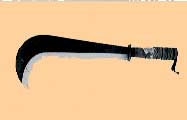March 13, 2005
Hard Decisions
Read it carefully: in this case the soldiers hesitated before firing, and such hesitation caused (indirectly) the death of four fine and brave men. The truth about situations like these is that you cannot have it both ways: if the standing procedures are designed to optimize the safety of the soldiers, the civilians will be at more risk. If the focus is on civilian safety, soldiers will be in a more dangerous position. The decision window is extremely short, a few seconds at best, and in this time the soldiers manning checkpoints and vehicle guns have to take decisions that will mean life and death, for themselves, their comrades and the civilians who are nearby. It's not an easy job, and I cannot cast condemnations if mistakes are made.This is what had happened: A short distance from our FOB, A US convoy
was driving down the road. As they headed to their destination a civilian
vehicle pulled on from a side alley and attempted to get into the convoy.
Apparently, the convoy gunners were too green or some how did not perceive the car to be a threat. They did not wave the car off, throw anything at him,
cut him off, or shoot to try and stop him. A nearby IP (Iraqi Police) SUV
witnessed the intruding vehicle and immediately intervened. It pulled up
to the rear of the convoy and tried to force the intruding vehicle off the
road. The IP’s had successfully put themselves between the vehicle and the
US convoy. Unable to deter the vehicle from approaching the US convoy or
make it pull over, the IP’s fired at the engine of the encroaching
vehicle. At this point, the driver detonated the IED inside his
vehicle. Yes, this was a classic VBIED.
This suicide bomber killed himself and the four IP’s in the vehicle holding him at bay. The device was so powerful that the bomber’s vehicle was literally obliterated. The engine block was thrown over 25 meters. The IP’s vehicle was nothing but a burned out shell. All four IP’s inside perished in the blast, but not a scratch was inflicted on the vehicles or personnel of the US convoy. Had it not been for the exceptional bravery, valor and situational awareness of these four Iraqi Patriots, that day would have been bloodier, and we probably would have had another communications blackout at the FOB
Comments:




